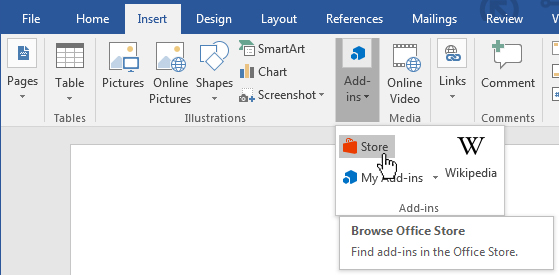

- #Turn on accessibility in word 2013 how to#
- #Turn on accessibility in word 2013 full#
- #Turn on accessibility in word 2013 Pc#
- #Turn on accessibility in word 2013 download#
- #Turn on accessibility in word 2013 mac#
Click it again, and Word goes back to Simple Markup.
#Turn on accessibility in word 2013 full#
When you click a line, Word switches to All Markup View so you can see the full edits.
Lines in the margin indicate where changes have been made. Select Customize Ribbon, then click the check box for the Developer tab. Word 2013's Simple Markup view solves this issue by displaying the final version of a document. To do this, click File > Options to access the Word Options dialog box. Step 1: Turn on the Developer tabīefore you create form elements in a document, you'll need to activate the Developer tab on the Ribbon.
#Turn on accessibility in word 2013 download#
You can also download our example file if you'd like to follow along. This makes it easier for everyone to know what type of information to include, and it also helps ensure all of the information is formatted the same way. A form allows you to create placeholders for different types of information, such as text, dates, yes-no questions, and so on. To simplify the process, you could create a form in Microsoft Word. But have you ever created a document for other people to use?įor example, let's say you're organizing a field trip and want everyone to send in their permission forms electronically. If you've ever used Microsoft Word, you've probably spent a lot of time customizing different options to get your document to look exactly the way you want.
#Turn on accessibility in word 2013 how to#
Go to “Office authoring languages and proofing” and choose the language you want./en/word-tips/changing-your-default-settings-in-word/content/ How to create forms in Word Go to “Review” and click on “Language” then “Language Preferences.”Ģ. To choose a different language, follow these steps:ġ. However, keep in mind that you may experience more bugs with some languages. Yes! Many different languages are supported by AutoCorrect. Additional FAQ Can I Use AutoCorrect With Other Languages Besides English? Turn off AutoCorrect, or turn off a feature you don’t like.Īs with previous versions, you may add more automated corrections or delete words that you don’t want to be corrected automatically.In the Word Options window, select “Proofing.”.Select “Options” in the bottom-left corner of the left pane.Select the features you want to disable or disable AutoCorrect entirely.In the Word Options tab, click on the “Proofing” option.From the drop-down menu, choose “File.”.You can also add further adjustments or remove words that you don’t want to be corrected in this menu. Select the features you wish to disable or disable the entire feature.From the drop-down menu, choose “AutoCorrect Options.”.In the “Word Options” window, select the “Proofing” option.From the drop-down menu, choose “Options.”.Click the “Office” button in the top-left corner.In the case of the latter, AutoCorrect won’t check words deleted from its dictionary. You may also add more automatic corrections for words that you commonly misspell or delete ones that you don’t want to have corrected automatically.

If the box is unchecked, the feature is disabled. If the box is checked, the feature is enabled. You can turn off the features you dislike or turn off the feature altogether.Select the “Options” tab from the drop-down menu.Then, from the “Format” option, choose “AutoFormat.”.
#Turn on accessibility in word 2013 mac#
The steps for turning off Autocorrect on Microsoft Word on a Mac are similar to Windows, only slightly different depending on your Word version. How to Turn Off AutoCorrect on Microsoft Word on a Mac Here, you also can add additional corrections or remove words that you don’t want to be fixed.
#Turn on accessibility in word 2013 Pc#
How to Turn Off AutoCorrect on Microsoft Word on a Windows PC Keep reading to learn more about switching off this handy feature and answers to common questions like changing your AutoCorrect language preference and adding words to the feature. Luckily, you can turn off the AutoCorrect feature on different versions of MS Word.


 0 kommentar(er)
0 kommentar(er)
